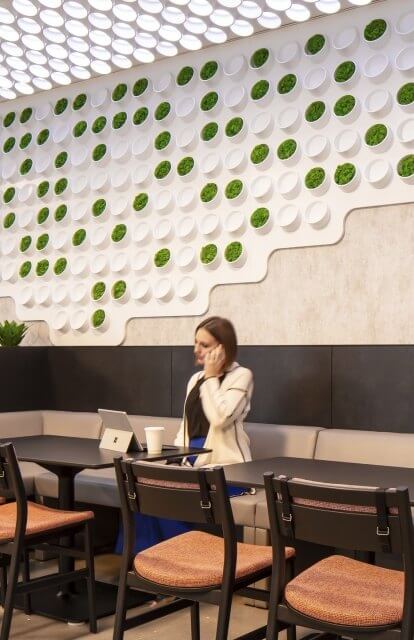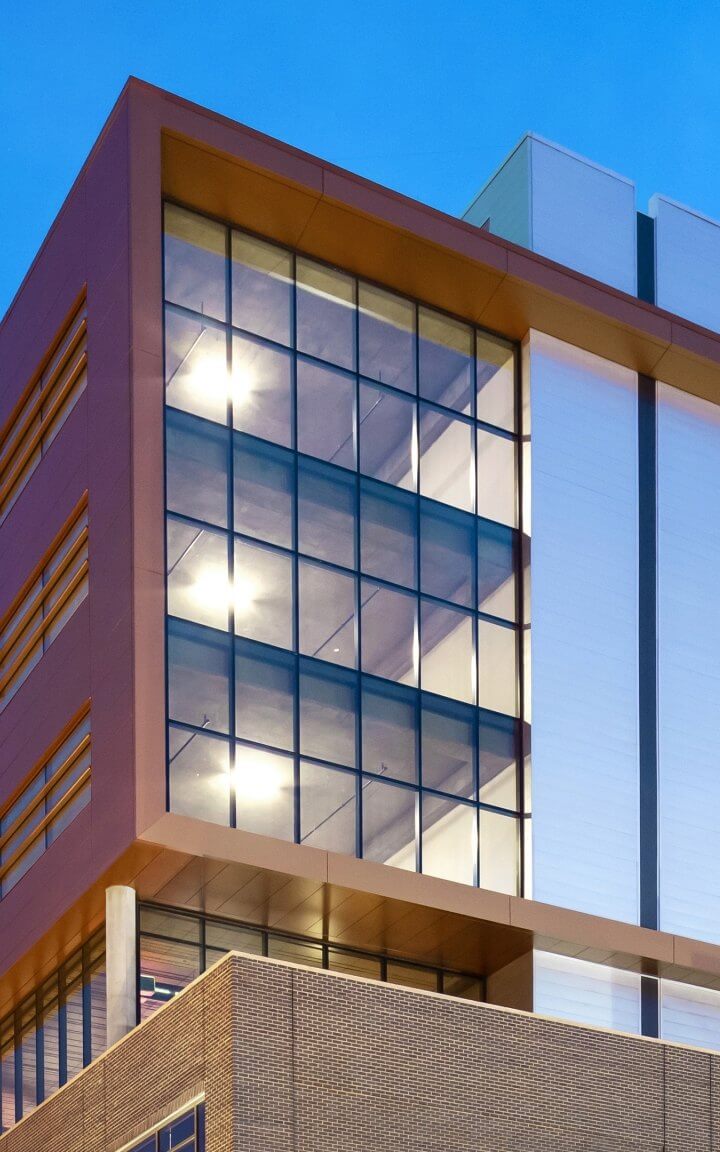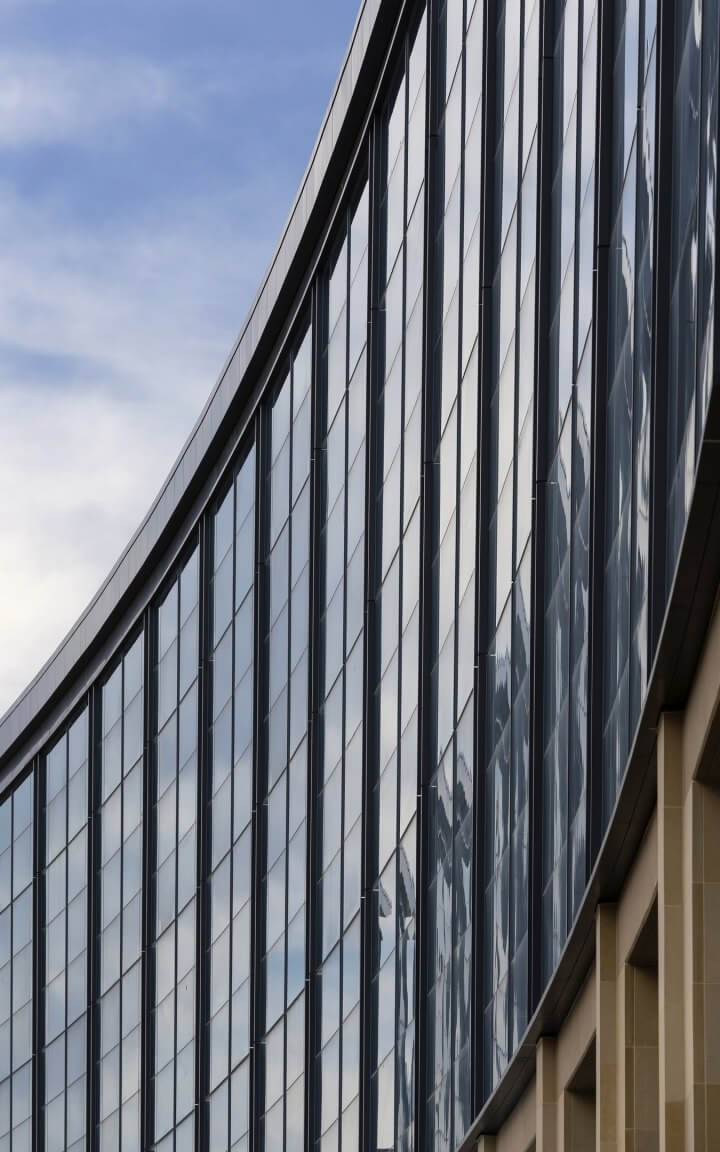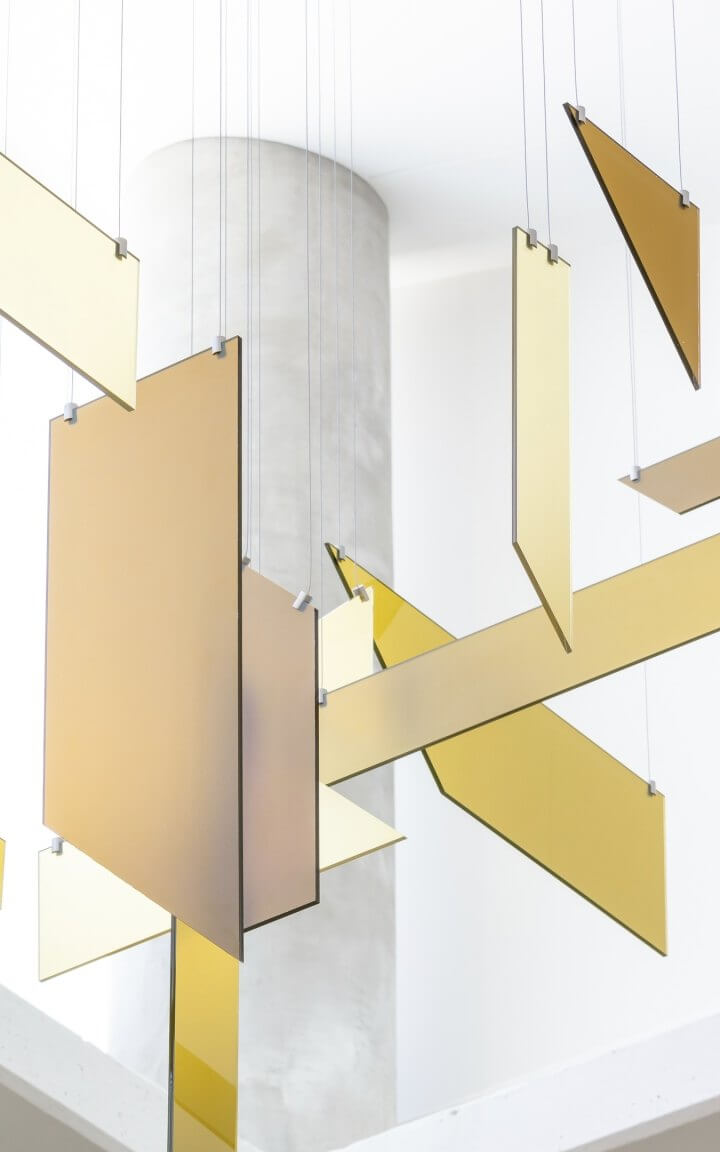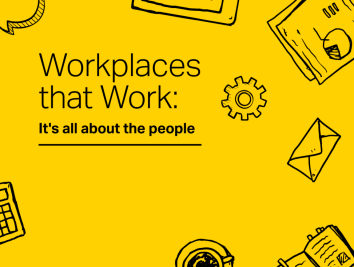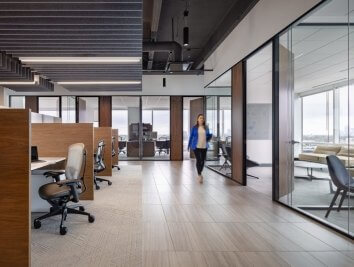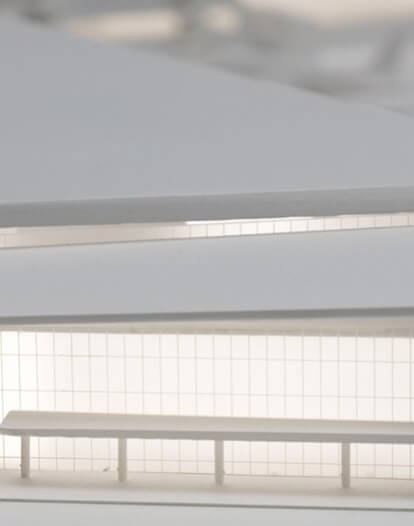The Pain Points of Hybrid Work and What to Do About Them
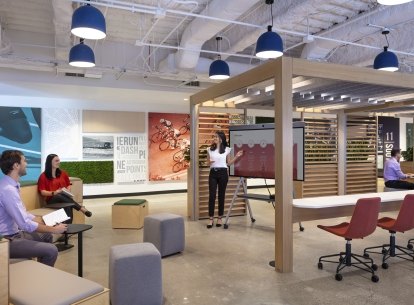
Hybrid work is here to stay, but are employees? While the conversation about whether or not we come back to the office may have found level, the challenges of navigating a hybrid workforce remain. Less about the “to office or not to office” debates of previous years, many managers and human resources teams appreciate the flexibility and benefits it offers employees but are confronted with navigating new challenges of modern work. From friction points in transitioning throughout the day, connectivity between teams, and engagement, the stakes are high and retaining talent and optimizing team performance can be difficult when juggling a distributed workforce, new technologies, and a mix of teams and needs.
Finding that policy alone can’t solve for the several, diverse issues organizations face in creating a workplace experience that meets the needs of its employees and functions, Corgan’s Houston Interiors leaders share their insights on how design can help clients navigate the opportunities and challenges of a hybrid workforce. As Houston and Texas continue to grow as a magnet for startups and corporate giants, so does our bench of expertise sharing a mix of case studies on clients winning the future of work.
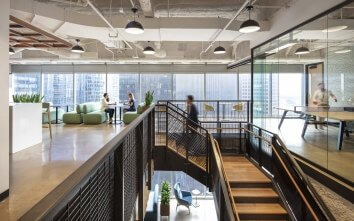
The Painpoints and Challenges
According to Corgan’s Hybrid Report, avoiding the commute is the number one driver to work from home for hybrid workers. Other motives outlined include fostering collaboration and social engagement and investing in technology that effectively connects the physical and virtual workplaces. These concerns are corroborated by research from Appspace, which reports that 70% of workers say they waste time transitioning between the office and home, 35% who struggle with feeling connected and engaged, and 29% report delays in receiving important information. Meanwhile 71% of respondents in the CBRE 2022-23 Global Workplace and Occupancy Insights Report planned to expand their hybrid program over the next several years. So how do employers balance a clear employ priority of flexibility while preserving a workplace and culture that supports performance, belonging and connectivity?
Seamless Transitions
“Workers want work-life balance, but moving between two places can cause anxiety,” says Ally Li, project specialist. But moving between work and home—or from office to office and between team members and peers with different schedules—can introduce several new variables. The increased flexibility and diversity in staff locations and schedules can create lags while also introducing new transition points. As employees move from home to office to gym and back to the office, for instance, or transition from the virtual to physical space, these disruptions fracture a previously more singular experience. Rather, employees expect engaging places that aren’t annoying or disjointed.
Identifying the various touchpoints and transitions in the employee journey can help ease these movements and uncover opportunities to alleviate common frustrations that may deter employees from coming to the office or interrupt their performance. The ease or difficulty in entering a parking garage or finding a spot, badging into the building, navigating to the desk, reserving a meeting room—or successfully operating often dreaded conference room technology, collectively inform the employee experience.
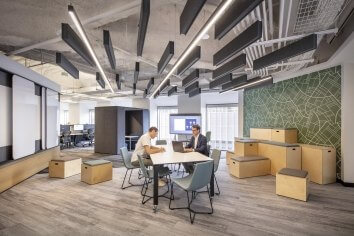
Modular Workspaces

Project Specialist Ally Li
Design interventions and strategic use of smart technology can simplify these moments. From reserving workspace assignments to minimizing walking distance, thoughtful design can help create a more positive sentiment about the office, says Ally. Offering additional modes of personalization can also help. Sit to stand desks, quiet rooms for focused work, and easy to access collaboration pop-ups, allow hybrid workers gain control over their environment and stay on track.
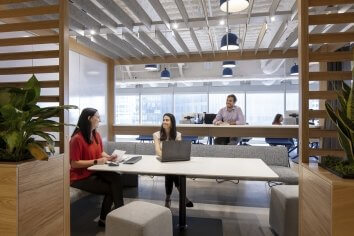
Collaboration Encouraged

Interior Designer Zain Samara
Champion Belonging
One of the greatest challenges to creating a hybrid culture include workers feeling less connected to the company and weakened collaboration and relationships. “People spend the majority of their waking hours inside—and many of them at work, so their environment shapes how they interact,” says interior designer Zain Samara. Hybrid work can make people feel isolated from the community and may affect mental health and job satisfaction. Younger workers who value socializing and interaction are especially at risk. Companies are responding by providing an ideal mix of experiences that create community, cohesion, and a sense of belonging.
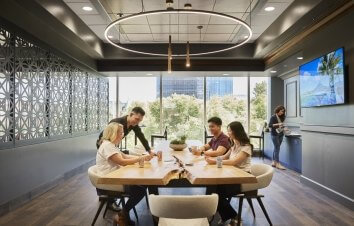
Feel like you belong

Project Manager Mariju Wille
Interior design project manager Mariju Wille agrees that the work environment can shape how people interact with each other — as well as how they feel. “When the design is less stark — less white, more inviting — it brings hospitality into the workplace, and it can help you feel like you belong.” Emphasizing the feeling that a place can evoke, she suggested warmer finishes, more human-centric layouts, and softer lighting. For example, placing workstations in a neighborhood-like cluster that has quick access to conference rooms, phone booths, and other collaboration assets gives a more personable feeling as compared to a sea of undifferentiated cubicles. Having different types of work areas close to each other also gives employees the choice of a quieter focus area or a place for congregating and collaborating, reinforcing belonging.
A Case Study On Community
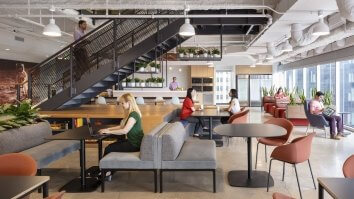
Culture
With the goal of showcasing their culture and bolstering a sense of belonging for its workforce of 1,800 employees, a global financial firm tapped the Houston Interiors Studio to design twelve levels of office space in a Houston high-rise. “The client wanted a fun, easy, motivating atmosphere with residential-inspired gathering spaces and open areas to create moments of connection” says Zain.
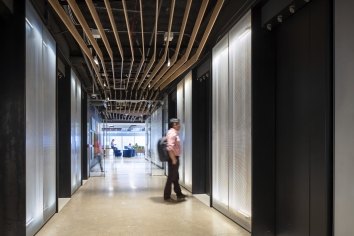
Connection
Attention to major circulation paths and gathering nodes can encourage intentional and casual moments of connection. Anchoring staircases that connect teams and centralize popular community destinations, stair seating, and open sight lines showcase the office buzz or the “water cooler chat” that brings to life the energy and culture of the space. Elsewhere a mix of amenities including four work cafes and tech bar and large gathering spaces for town hall meetings and events support the fluidity of collaboration—organized and planned as well as more organic moments of team building and connection.
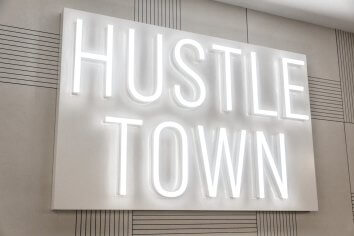
Storytelling
Branded environments not only support the identity and navigation of a space—they tell a story and shape the perceptions that staff hold. From supergraphics to immersive experiences, branded elements tap into the power of a mix of design interventions to create small moments and signature memories that collectively bind the community. For this Houston office project, Corgan’s Branded Environments team was charged with creating a sense of place that celebrated the bold gestures and entrepreneurial spirit of the city. Complemented with downtown views, large graphics, and neon signs, the office culture is activated as not only a place for work but also as a dynamic community inside and outside the office.
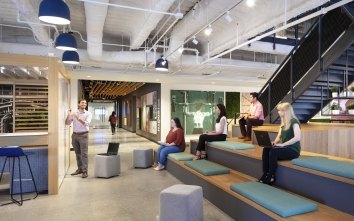
Focus on Communication
Hybrid work requires moving at hyper-speed. Staying in touch across different locations, schedules, and the virtual and physical space has invited a new era of technology, but successful hybrid cultures both employ and embrace these tools strategically. While staying connected can be harder for remote or hybrid workers, it can also mean constant interruptions and fragmented communications—tracking messages across Teams channels, emails, and phone calls, which can make it challenging to identify singular hubs for information or identify priority messages. With hybridity, many employees have lost the opportunities for immediate feedback for deskside conversations key to learning or getting clarity on timely news.
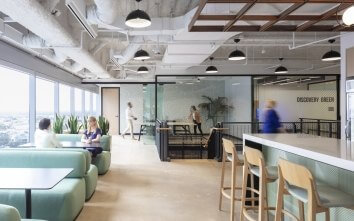
Workspaces Connected

Project Specialist Alejandra Acero
“Configuring workspaces and digital tools creates cohesive environments to stay connected—without the right tools in the right places we dilute the value of the office. The tools need to be seamlessly integrated into workflows and add meaningful value rather than incorporating tech for the sake of new technology,” says Project Specialist Alejandra Acero. Smart video technology with responsive 360-degree conference room cameras, mics, and speakers, for instance, create a more realistic and personal experience. Dynamic, digital signage alerts staff to key internal news and can be integrated with desktop and phone apps to communicate everything from staff event updates and announcements to meeting location and guests.
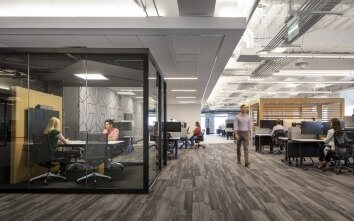
Planning and design can also help support more transparent communication—with clear lines of sight to colleagues or glass conference rooms, staff are encouraged to seek mentorship, ask questions, see collaboration on display, and stay in the loop as activities in their workplace develop. Removing the unknown and placing key team members front of mind promotes timelier, in-person interactions fundamental to clear communication.
Hybridity is Redefining and Empowing
Hybridity is redefining workplace expectations and empowering workers to choose when and where they work, but it’s not without its challenges. Policy alone cannot solve for the nuances and complexities that come with a hybrid workforce distributed across home, the office, and virtual or remote locations. However, companies have a chance to show their employees what their values are: “It reveals what is embedded in the DNA of the firm to make hybridity work,” Mariju said. Thoughtful and strategic design can help shape our behaviors and experiences to create spaces where employees appreciate a sense of belonging, feel more connected, and tap into the power of more intuitive, human environments.
